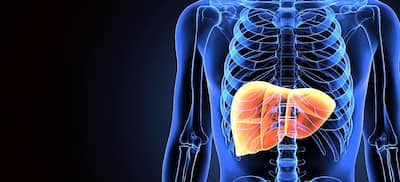
Hepatobiliary disorders are medical conditions affecting the liver, gallbladder, and bile ducts.
Any condition that affects the hepatobiliary system’s ability to operate is typically referred to as hepatobiliary illness. The disease can affect everyone, from superficial infections or scars to life-threatening illnesses like cancer. Hepatobiliary disorders are medical conditions affecting the liver, gallbladder, and bile ducts. Dr Naveen Polavarapu, Senior Consultant Gastroenterologist, Liver Specialist & Advanced Therapeutic Endoscopist & Endocrinologist, Yashoda Hospitals, Hyderabad, says that these disorders can range from mild and self-limiting to chronic and potentially life-threatening.
Diagnosis
The list of possible diagnoses is shortened for patients with known or suspected hepatobiliary illness by grouping the issue into one of many clinical syndromes.
- Determine whether there is any jaundice, ascites, dilated periumbilical veins, spider angiomata, or other liver disease symptoms. Regular hepatobiliary disease screening includes serum bilirubin, liver enzymes, and alkaline phosphatase measurements. Additional tests, such as serum albumin and prothrombin time measures, serologic testing, imaging examinations, cholangiography, and liver biopsy, may be required, depending on their accessibility.
- A clinical history that can aid in differentiating between disease processes and pointing to a diagnosis is the first step in a routine patient evaluation. The progression of the condition, right upper quadrant pain or discomfort, indigestion, jaundice, dark urine, pruritus, fever, anorexia, and other constitutional symptoms should all be questioned.
- In tropical regions, ultrasonography (US) is more accessible than computed tomography (CT) or magnetic resonance imaging (MRI). Gallstones, dilated biliary ducts, thickened gallbladder walls, tumours inside and around the liver, periportal fibrosis, hepatosplenomegaly, and signs of portal hypertension can all be found using ultrasound.
- Determining if there is a parenchymal liver disease (hepatitis, cirrhosis, granulomatous and other infiltrative processes, space-occupying lesions), biliary disease (biliary obstruction, other causes of jaundice), vascular disease, or splenomegaly is, therefore, the first step.
- An epidemiological history of exposures, a history of any underlying diseases, prescription drug use, and vaccines should all be obtained. The size, consistency, and tenderness of the liver, spleen, and gallbladder should all be assessed during the examination.
- Priority should be given to illnesses that threaten public health, such as hepatitis A and many viral hemorrhagic fevers, as well as to life-threatening but curable ailments, including hepatic abscess, cholangitis, and falciparum malaria.
READ RELATED: The Journey of Parenthood: 6 Ways A Lifecoach Can Help Mums & Dads
Disorders
- Pancreatitis: PANCREATITIS refers to inflammation of the pancreas. Symptoms include pain on the left side of the abdomen radiating to the back associated with nausea and vomiting. Causes of pancreatitis could be alcohol, gallstones, increased calcium and triglyceride levels, and in a few situations, the cause is not found. It could be acute or chronic. Medical attention is necessary for appropriate management of the condition.
- Biliary obstruction: Biliary obstruction occurs when the bile ducts are wholly or partially blocked. It can be caused by gallstones, tumours, strictures, or other conditions and may lead to jaundice, abdominal pain, and liver damage.
- Gallstones are solid deposits in the gallbladder, a small organ below the liver. They can cause pain, inflammation, and blockage of the bile ducts, leading to symptoms like abdominal pain, nausea, and jaundice.
- Hepatitis: Hepatitis is inflammation of the liver, often caused by viral infections (hepatitis A, B, C, D, and E). It can also result from alcohol abuse, certain medications, autoimmune diseases, or metabolic disorders.
- Cirrhosis is progressive liver scarring caused by chronic liver diseases like hepatitis or alcohol abuse. Over time, the liver becomes scarred and loses its ability to function correctly, leading to liver failure.
- Alcoholic liver disease: Excessive and prolonged alcohol consumption can lead to alcoholic liver disease, which includes fatty liver, alcoholic hepatitis (inflammation of the liver), and cirrhosis.
Total Wellness is now just a click away.
Follow us on
Don’t Miss Out on the Latest Updates.
Subscribe to Our Newsletter Today!
window.addEventListener(‘load’, (event) => {
$(‘#commentbtn’).on(“click”,function(){
(function(d, s, id) { var js, fjs = d.getElementsByTagName(s)[0]; if (d.getElementById(id)) return; js = d.createElement(s); js.id = id; js.src = “//connect.facebook.net/en_US/sdk.js#xfbml=1&version=v2.3”; fjs.parentNode.insertBefore(js, fjs);}(document, ‘script’, ‘facebook-jssdk’));
$(“.cmntbox”).toggle();
});
});







